red31 wrote:
Would this system be less stressful on the trailer's a-frame members?
Hi Red,
A quick answer to your question is, it depends.
The hitch is advertized as one size fits all and does not list a bottom end but does a top end of 1,400# TW and 14,000# tow rating. If every trailer and TT A frame was built like the 1,400# TW, 14,000 GVW rated frame is, then this would be easier to answer.
Let's look at a few things and the differences of a traditional WD hitch and the new Anderson as they pertain to TT's.
For explanation purposes the conventional WD hitch has chains or L brackets to hold the ends of the WD bars. I'll use the chain example however both have the same effect on the WD bar for what I am going to state.
- On a conventional WD hitch when TV and TT are towing down a level road straight ahead each chain is under equal loading. And so is the Anderson.
- During a turn with a conventional WD hitch on level flat road the chain load is again close to equal in the big picture of things. There are some smaller changes but not drastic. On the Anderson in a turn the chains change force from the left to right side some. The inside chain become a little looser and the outside turn chain becomes a little tighter. As the turn continues the hitch shank slips in the shank socket both chains came back to be closer to equal. The chain forces change but not what I would consider major. As long as you always went camping on perfectly level ground there would be a lot less A frame issues on a conventional WD hitch.
- Now lets enter the real world of camping. The TV going in and out of turns all the time where an angle exists between the TV ground and the TT ground. Here large changes will come in the conventional WD hitch. If the TV is tilted enough the WD head tilts with the truck and the inside turn WD bar and completely unload. The outside WD bar now is taking all the load so that out side bar can approach being twice as loaded in the chains. This action creates an unbalanced load in the A frame. That unbalanced load in some cases has broken the A Frame on TT frames that have had issues if the tongue weight and WD bars where large enough. The Anderson chains do not change as drastic in loading even on uneven ground. So in this perspective the Anderson is better IMO.
Here are some pics to show what I was referring too. Here is the turn.
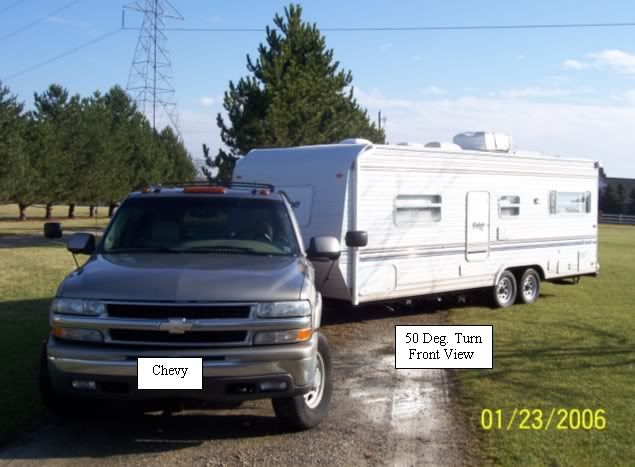
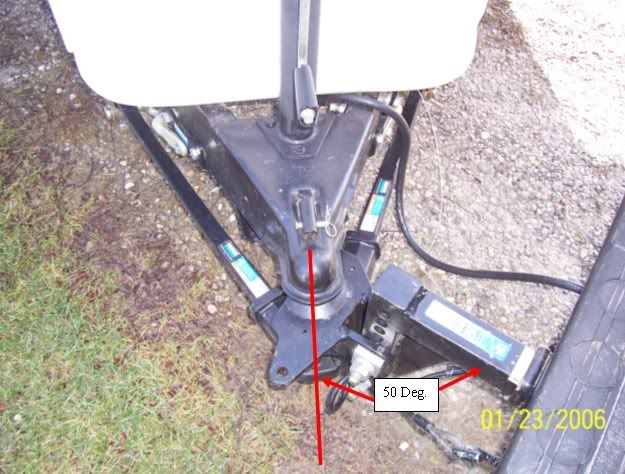
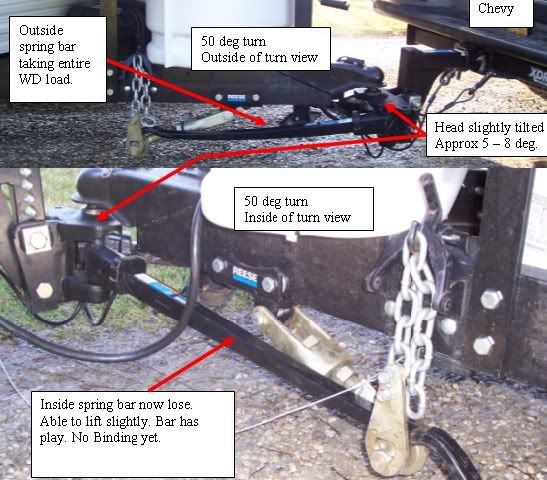
The inside WD bar I could rattle around with my foot. In my case I had a 5" C Channel A frame. 5" C Channel is strong enough to resist the twisting that can come from a WD hitch for the 1,200# TW that camper had.
Now what WD forces can do if the A frame is not strong enough for these unbalanced loads?
One mode of failure is the A frame side rails twist. The header and battery shelf needs to resit that twist. If they cannot then the header can buckle and the battery shelf. Here is the start of the problem
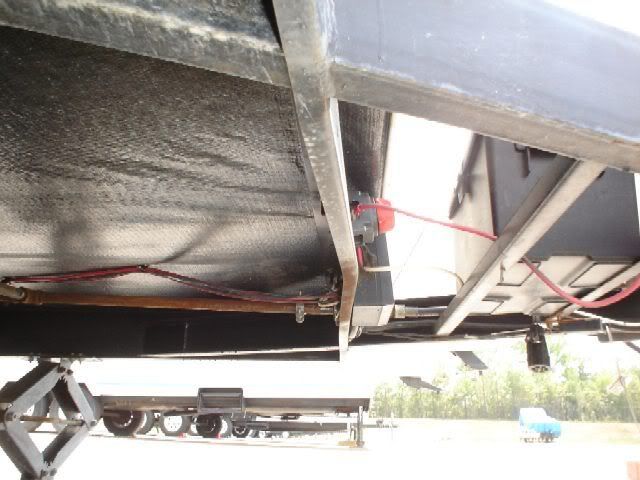
Left gone unchecked the header buckles more and more and eventually separates from the A frame members.
Below you can see here how the chains pull on the top of the A frame creating the force that makes the twist. The key to not having this become a problem is to have the A frame rails stiff enough or reinforced to resist the twist or the header made to handle the twist. In my case my camper in this pic was made strong enough to resist the twist.
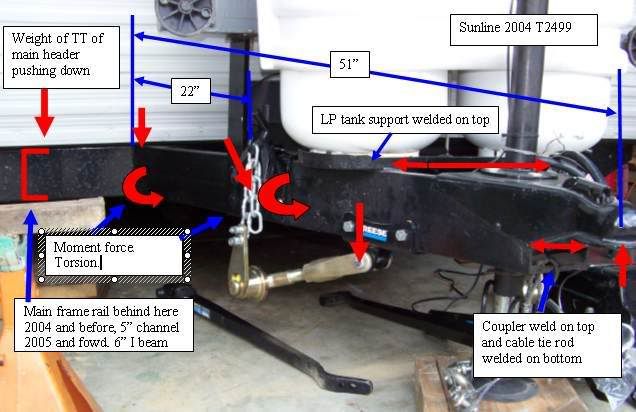
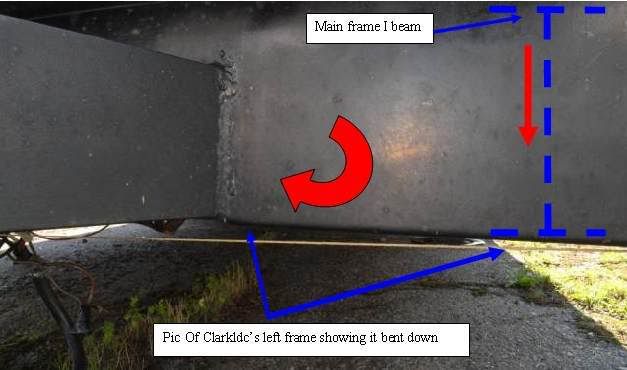
The Anderson does not have the same loading on the top of the A frame or large unbalanced chain loads so that mode of failure would not be the same as a conventional WD hitch on a light A frame.
The Anderson does have other concerns the conventional WD hitch does not.
- The chain loads on the Anderson are a lot higher then the conventional WD hitch. We are still sorting out if it is 2, 3 or 4 times higher. While they pull forward they are at an angle to the A frame pulling inward. So you are pulling on the bottom of the A frame at an angle and with a higher chain load. If you have a light A frame the higher WD chain force and the angle of pulling is a new thing to work through if it is a problem or not.
- The next area of concern is the urethane spring bracket. They provide a clamp feature that uses 5/8" bolts to squeeze the side of the A frame for grip. And they want those bolts torqued to 150 ft. lb. On a big A frame that is beefy, that is not a problem. In thin wall box tubing of light weight TT's it may deform the tube and then you are towing the camper by pulling on that deformed tube. See here for the clamp.
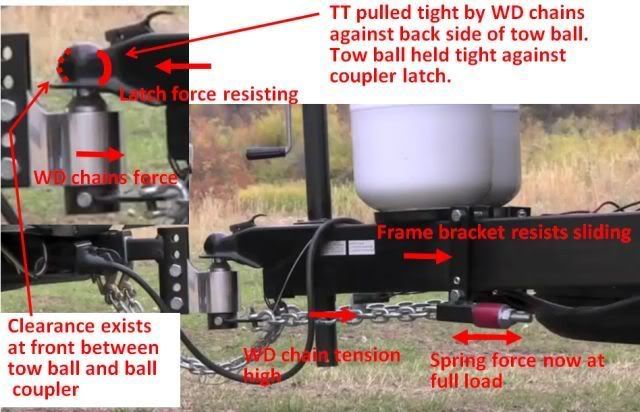
Since all A Frames are not created equal, making a generic marketing statement that one size fits all is a stretch. If you have a thin wall tube A frame, check with your TT manufacture if the A frame can handle this hitch.
Hope this helps
John






